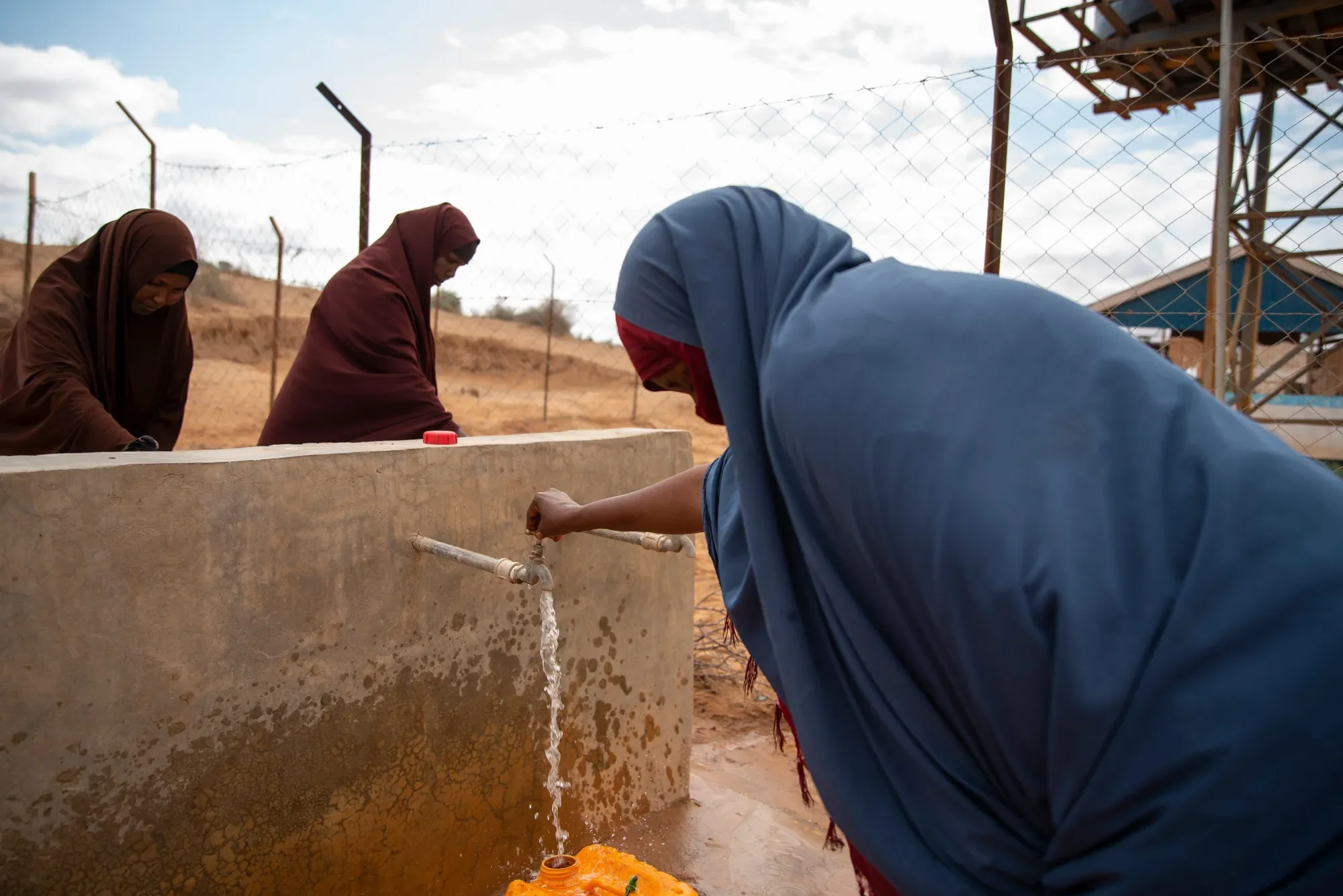Geneva, April 6, 2023 – Cholera has been moving fast from country to country since the beginning of the year, driven by a dangerous mix of climate change, related disasters, and conflict. A new analysis by CARE International, ahead of World Health Day, shows that this alarming spread primarily affects countries with high levels of gender inequality. And as cholera particularly impacts women and children, the organization calls for disaggregated data on populations at risk to improve the humanitarian response.
“The number of cholera-affected countries grew by 28% in just one month, from 18 in February to 23 on March 22nd,” said Sally Austin, CARE International Head of Emergency Operations. “The disease has now spilled across borders with additional outbreaks across the Horn and Southern Africa, affecting mostly countries with already fragile health systems.”
“We are very concerned by the impact of extreme weather patterns like Cyclone Freddy, which recently struck several countries in Southeast Africa, bringing death, destruction, and displacement, and leaving communities even more vulnerable to disease outbreaks such as cholera,” said Matthew Pickard, CARE International Regional Director for Southern Africa. “In Malawi, which was already facing its worst outbreak in decades, more people are infected with cholera and dying each day.”
According to the World Health Organization (WHO), this seventh cholera pandemic, which has become acute since mid-2021, is characterized by multiple outbreaks, has spread to areas that used to be free of cholera, such as Syria and Lebanon, and often exhibits alarmingly high mortality rates.
The analysis by CARE draws on data from the INFORM Risk database and the Gender Inequality Index, and shows that:
- All cholera-affected countries fall above the global median in terms of gender inequality, with 30% (7 out of 23) having a high or very high risk of child mortality and acute malnutrition– including the Democratic Republic of Congo and South Sudan.
- 74% (17 out of 23) of cholera-affected countries have a high or very high risk of conflict – for example, Somalia and Haiti.
- 61% (14 out of 23) of cholera-affected countries have a high or very high risk of natural hazards such as tropical storms, floods, and drought– for example, Malawi and Mozambique.
“Risks associated with cholera, like other infectious diseases, are not gender neutral,” said Allison Prather, CARE advisor supporting public health emergencies. “Pregnant and breastfeeding women are more vulnerable to malnutrition and run higher risks of developing fatal complications if they contract cholera. Traditional roles also play their part, with women and girls more likely to come in contact with the virus as they fetch water, prepare food, take care of sick family members, and clean latrines. We also know that 70% of the health workforce responding to outbreaks are women.”
Mortality is also higher among children, especially those under five years old and children with severe acute malnutrition.
With extreme weather patterns expected to become increasingly frequent, and scientists linking climate change to the spread of cholera, humanitarians must be able to rely on disaggregated data to improve their response. “Saying that there are 11 million people at risk in Haiti is not the same thing as knowing that some 300,000 of those are pregnant women. Particularly given the fact that Haiti already has the highest maternal mortality rate in the Latin America region” said Martin Dickler, CARE Director in Haiti, a country battling a resurgence of cholera in an already complex humanitarian crisis. “The humanitarian community must do more to collect data on sex, age, and disability. This is essential to really protect those most at risk.”
CARE’s methodology
CARE compared the 24 cholera-affected countries (as reported by the WHO, March 22, 2023) with risk indicators in the INFORM risk index, specifically ‘Hazard and Exposure Risk’ and ‘Vulnerability Risk’ and associated sub-indicators. Data was isolated within the ‘high’ and ‘very high’ risk ratings used by the INFORM risk index to create percentages. Percentages were calculated against 23 countries, as the INFORM index does not separate “Syrian Arab Republic” and “Northwest Syria.” CARE also compared the cholera-affected countries against the Gender Inequality Index data (2021), noting that all countries (aside from Somalia, not included in this index) fall above the global median rank of 86.
CARE’s response
In Haiti, CARE is ready to provide hygiene awareness training and hygiene kits with essential items such as soap, water purification tablets, and hand sanitizer.
In Southern Africa, CARE alongside its local partners and government agencies is delivering much-needed support to affected families and communities: hygiene packs, shelter and kitchen kits, as well as cholera prevention activities.
In South Sudan, CARE is raising hygiene awareness in vulnerable communities and distributing items including soap, water purification sachets, jerry cans and buckets, and constructing latrines.
In Syria, CARE is implementing programs to prevent and mitigate the further spread of cholera via its mobile teams, monitoring and chlorinating water resources, disinfecting water tanks, and distributing water purification tablets, soap and jerry cans, as well as running hygiene promotion sessions. CARE Syria also works on restoring the water supply in locations where water scarcity is acute through water trucking; the rehabilitation of water networks; sanitation, including installing toilets, disinfecting water tanks, setting up handwashing stations; and solid waste management.
For media inquiries, please contact
Anisa Husain, CARE US Press Officer

